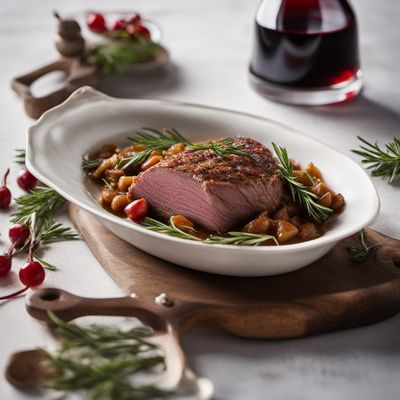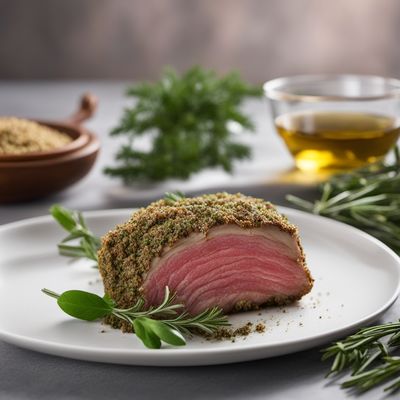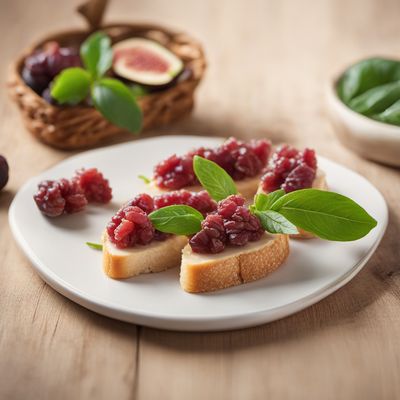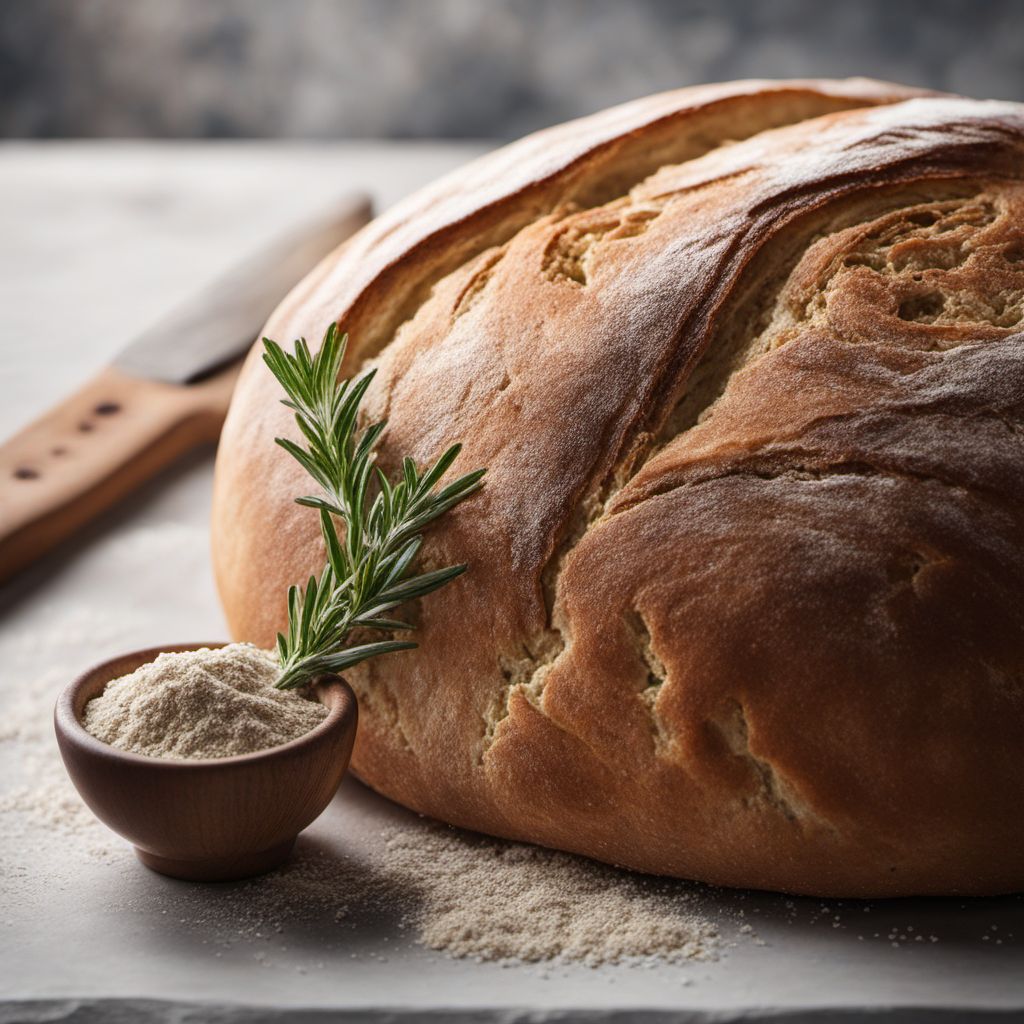
Recipe
Pane di Matera - Authentic Italian Bread Recipe
Rustic Delight: Pane di Matera - A Taste of Traditional Italian Bread
4.7 out of 5
Indulge in the rich flavors of Italy with this authentic recipe for Pane di Matera. This traditional Italian bread, originating from the city of Matera, is known for its rustic charm and delightful taste.
Metadata
Preparation time
20 minutes
Cooking time
30-35 minutes
Total time
2 hours 55 minutes
Yields
4 servings
Preparation difficulty
Medium
Suitable for
Vegetarian, Vegan (if honey is substituted with another sweetener), Dairy-free, Nut-free, Soy-free
Allergens
Wheat
Not suitable for
Gluten-free, Keto, Paleo, Low-carb, High-protein
Ingredients
-
500g (4 cups) bread flour 500g (4 cups) bread flour
-
350ml (1 ½ cups) warm water 350ml (1 ½ cups) warm water
-
10g (2 tsp) salt 10g (2 tsp) salt
-
5g (1 tsp) active dry yeast 5g (1 tsp) active dry yeast
-
1 sprig of fresh rosemary 1 sprig of fresh rosemary
Nutrition
- Calories (kcal / KJ): 250 kcal / 1046 KJ
- Fat (total, saturated): 1g, 0g
- Carbohydrates (total, sugars): 52g, 0g
- Protein: 8g
- Fiber: 2g
- Salt: 1.2g
Preparation
-
1.In a large mixing bowl, combine the bread flour, salt, and active dry yeast.
-
2.Slowly add the warm water while stirring the mixture until a sticky dough forms.
-
3.Knead the dough on a lightly floured surface for about 10 minutes until it becomes smooth and elastic.
-
4.Place the dough back into the mixing bowl, cover it with a clean kitchen towel, and let it rise in a warm place for 2 hours or until doubled in size.
-
5.Preheat the oven to 220°C (425°F) and place a baking stone or baking sheet inside to heat up.
-
6.Punch down the risen dough and shape it into a rustic loaf. Place it on a piece of parchment paper.
-
7.Sprinkle the top of the loaf with fresh rosemary leaves and gently press them into the dough.
-
8.Transfer the loaf, along with the parchment paper, onto the preheated baking stone or baking sheet.
-
9.Bake for 30-35 minutes or until the bread has a golden brown crust and sounds hollow when tapped on the bottom.
-
10.Remove from the oven and let it cool on a wire rack before slicing.
Treat your ingredients with care...
- Bread flour — Using bread flour with a higher protein content will result in a better texture and rise for the bread.
- Fresh rosemary — Make sure to remove the rosemary leaves from the stem before sprinkling them on the bread for even distribution.
Tips & Tricks
- For a more pronounced rosemary flavor, you can infuse the warm water with rosemary sprigs before adding it to the dough.
- To achieve a crustier bread, place a pan of water in the oven while baking to create steam.
- If you prefer a softer crust, brush the loaf with olive oil before baking.
Serving advice
Pane di Matera is best enjoyed fresh out of the oven, still warm. Serve it as a side to soups, stews, or pasta dishes. It also makes a delicious base for bruschetta or can be sliced and used for sandwiches.
Presentation advice
To showcase the rustic charm of Pane di Matera, present the loaf on a wooden cutting board or a rustic bread basket. Sprinkle some extra rosemary leaves around the bread for an added touch of freshness.
More recipes...
For Pane di Matera
More Italian cuisine dishes » Browse all
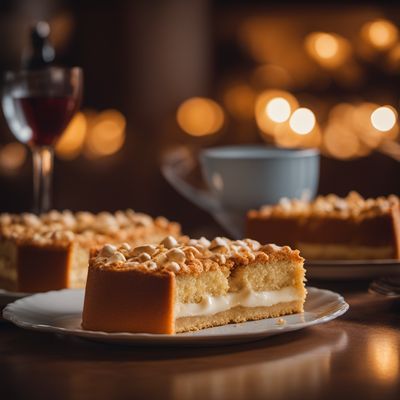
Torta degli addobbi
Torta degli addobbi is a classic Italian dessert that is perfect for any occasion. This dish is made by baking a mixture of eggs, sugar, and...

Conchiglie al cavolfiore
Conchiglie pasta with cauliflower
Conchiglie al cavolfiore is a delicious Italian dish that is perfect for a quick and easy dinner. The dish is made with pasta shells and...

Amatriciana
Amatriciana is a classic Italian pasta dish that originated in the town of Amatrice in the Lazio region of Italy. It is a simple and flavorful...

